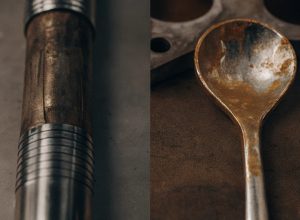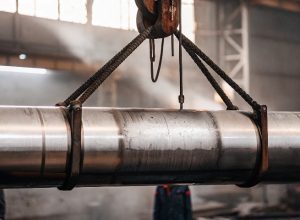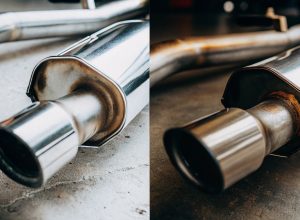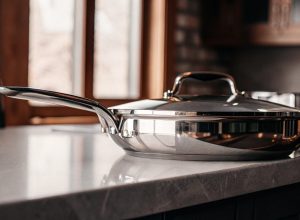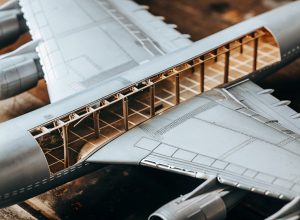Are you concerned about scratches on your titanium parts? You know the metal is incredibly strong, yet surface marks appear with frustrating ease, raising questions about quality and appearance.
Titanium scratches easily because its protective oxide layer is very thin. While the core metal is hard, this surface layer can be scraped away by harder objects. This creates a visible mark that reflects issues with surface durability, not the material’s underlying strength.
I discuss this topic frequently with clients. Many, like Sophie, a technical sales rep from Canada, are surprised when they first encounter this. Sophie’s clients in the aerospace industry need pristine components, and a simple handling mistake can mark up a valuable part. She often asks me, "Li Sisi, if titanium is so tough, why are we dealing with these cosmetic issues?" The answer isn’t just about hardness; it’s about understanding what makes titanium unique. Let’s explore some common questions I hear from buyers and engineers. This will help you get the most out of this amazing material.
Can you fix scratches on titanium?
Scratches on your titanium components look unprofessional. Worse, they might lead to a project rejection. You need a reliable way to restore the surface without compromising the part.
Yes, you can absolutely fix scratches on titanium. Professionals use methods like precision polishing, bead blasting, or water grinding. At my company, we use these techniques to remove surface flaws, especially for critical aerospace and medical-grade materials where a perfect finish is non-negotiable.
I remember a case with a client who manufactured medical implants. A batch of titanium rods had developed surface scratches during transit. For medical use, the surface must be perfectly smooth to ensure biocompatibility and prevent any potential issues. They were in a panic. We advised them on a controlled refinishing process. At our facility, we handle these issues carefully because we understand the stakes.
Professional Refinishing Methods
For industrial applications, fixing scratches isn’t a simple DIY job. The method used depends on the component’s final application, the required surface finish, and the depth of the scratch. Using the wrong technique can alter the part’s dimensions or compromise its integrity.
| Method | Best For | Key Considerations |
|---|---|---|
| Water Grinding | Deep scratches, material prep | Removes material; requires precision control. |
| Precision Polishing | Fine to medium scratches | Creates a smooth, often reflective finish. |
| Bead Blasting | Uniform matte finish | Hides minor scratches, creates a consistent texture. |
| Anodizing | Coloring and protection | Can cover very fine scratches; adds a new oxide layer. |
DIY vs. Professional Repair
While you might find home remedies for titanium jewelry, these methods are not suitable for industrial or technical components. A purchasing manager for an automotive company once told me they tried to buff out scratches on a set of custom exhaust parts themselves. It ended up creating an uneven finish and they had to scrap the parts. For any application where tolerances and surface integrity are critical, always rely on professional refinishing. The risk of damaging a high-value component is just too high.
Does titanium scratch easier than platinum?
You are choosing between titanium and platinum for a high-value product. You assume titanium’s hardness means better scratch resistance, but the reality can be very different and costly.
Yes, in many real-world situations, titanium scratches more easily than platinum. Although titanium is technically harder on the Mohs scale, its thin protective oxide layer is more prone to abrasion. Platinum is denser and more malleable, which helps it resist deep, noticeable scratches.
This is one of the most counterintuitive facts about titanium. Sophie often explains this to her clients in the high-end automotive sector. They see that titanium has a Mohs hardness1 of around 6, while platinum is only about 4 to 4.5. Logically, titanium should win. But experience tells us otherwise. My clients frequently report that titanium parts show marks from handling and installation, while denser metals do not. The key is to look beyond a single number and consider how the materials behave.
Hardness vs. Real-World Performance
The Mohs scale measures a material’s resistance to being scratched by another. It’s a great test for geologists, but it doesn’t tell the whole story for engineered metals. Factors like the protective oxide layer2, ductility (how much a metal can deform without breaking), and density all play a role in what we perceive as scratch resistance.
| Property | Titanium | Platinum | Why It Matters for Scratches |
|---|---|---|---|
| Mohs Hardness | ~6.0 | ~4.5 | Titanium resists being gouged by harder minerals. |
| Oxide Layer | Thin, strong, but brittle | Not a significant factor | Titanium’s thin skin scratches off, even if the metal below is fine. |
| Ductility | Lower | Higher | Platinum can "smear" or move when scratched, making it less visible. |
| Density | Low (~4.5 g/cm³) | High (~21.45 g/cm³) | The "heft" of platinum can make it feel more resilient. |
When a sharp edge presses against titanium, it can easily slice through the thin, invisible oxide layer and leave a mark. With platinum, its greater ductility means the metal might just move out of the way. Think of it like this: pressing a knife into a crisp apple skin versus a soft orange peel. The apple skin breaks cleanly, while the orange peel might just indent.
Will a magnet stick to titanium?
You need to verify your material is genuine titanium. You grab a magnet for a quick test. But what does the result really mean for your material’s grade and authenticity?
No, a magnet will not stick to commercially pure titanium. Titanium is paramagnetic, which means it is not magnetic in the way iron is. If a magnet has a strong pull on your metal, it is likely not titanium but a different material, like stainless steel.
The magnet test is a quick and useful field test I recommend to clients. It’s an easy first step in material verification. I once had a new purchasing manager call me, worried because a shipment of "titanium" fasteners he received from another supplier was strongly magnetic. He was right to be suspicious. After testing, it turned out the parts were made from 316 stainless steel, not the Grade 2 titanium he had ordered. It saved his company from a major assembly failure.
The Science of Titanium and Magnets
Metals react to magnets in different ways. Most people are familiar with ferromagnetic metals like iron, which are strongly attracted to magnets. Titanium, however, is a paramagnetic3 material. This means its atoms are very weakly attracted to a magnetic field, but this attraction is so faint you cannot feel it with a standard magnet. For all practical purposes, titanium is non-magnetic.
What It Means for Your Application
This property is more than just a party trick; it’s critical for certain industries.
- Medical Field: For MRI machines and other medical imaging, non-magnetic materials are essential to avoid interference and ensure patient safety. Titanium implants are ideal for this reason.
- Material Sorting: In a busy workshop or warehouse, a simple magnet can quickly differentiate a pile of titanium scrap from stainless steel scrap, preventing costly mix-ups.
- Aerospace Electronics: In housings for sensitive electronic equipment, using non-magnetic materials like titanium helps shield components from magnetic interference.
If you find a slight magnetic pull, you may have a specific titanium alloy. Some alloys containing metals like nickel or iron might show a very weak response. However, a strong pull is a clear red flag.
Does real titanium tarnish?
You chose titanium for its famous corrosion resistance. But now you see a strange discoloration on the surface. Is your premium material failing or tarnishing right before your eyes?
Real titanium does not tarnish or rust like other metals. However, its protective oxide layer can change color when exposed to very high heat or certain acids. This discoloration is not corrosion but a change in the thickness of the surface layer itself.
This is another question that comes up often, especially from clients in the chemical processing or automotive performance industries. They see rainbow colors—blues, purples, and golds—on titanium parts and worry it’s a sign of decay. It’s actually the opposite. This coloring, known as heat anodization4, shows the oxide layer reacting to the environment and doing its job of protecting the metal underneath. For decorative purposes, this effect is often created intentionally.
Understanding the Oxide Layer
When titanium is exposed to air, it instantly forms a thin, tough, transparent layer of titanium dioxide (TiO₂). This layer is incredibly stable and protects the metal from reacting with its surroundings. When you heat it or expose it to certain chemicals, this layer gets thicker. The way light refracts through this thickening layer is what causes the colors you see. It’s not a sign of weakness.
Preventing Discoloration in Harsh Environments
However, not all applications want this color change. For clients who need titanium to remain stable in highly corrosive or high-temperature environments, selecting the right grade is key. This is a common part of my discussions with technical teams.
| Titanium Grade | Key Feature | Best Environment |
|---|---|---|
| Grade 2 (Commercially Pure) | Excellent all-around corrosion resistance | General industrial, marine, architectural |
| Grade 5 (Ti-6Al-4V) | High strength | Aerospace structures, high-performance parts (can discolor with heat) |
| Grade 7 (0.15% Palladium) | Superior resistance to acids | Chemical processing, desalination plants |
| Grade 12 (Ni and Mo) | Enhanced crevice corrosion resistance | High-temperature brine, acidic environments |
If a client tells me they need a reactor vessel for acidic processing, I immediately recommend Grade 7. Its palladium content significantly boosts resistance and prevents the surface changes they want to avoid.
Conclusion
Titanium is strong but scratches from its thin oxide layer. Luckily, these marks can be fixed. Understanding its unique properties helps you select the right grade for your project.
-
Learn how Mohs hardness relates to the scratch resistance of titanium and its applications. ↩
-
Learn about the protective oxide layer to better understand titanium’s durability and maintenance needs. ↩
-
Understanding titanium’s paramagnetic properties is crucial for applications in sensitive environments. ↩
-
Explore the process of heat anodization and its impact on the appearance of titanium parts. ↩






